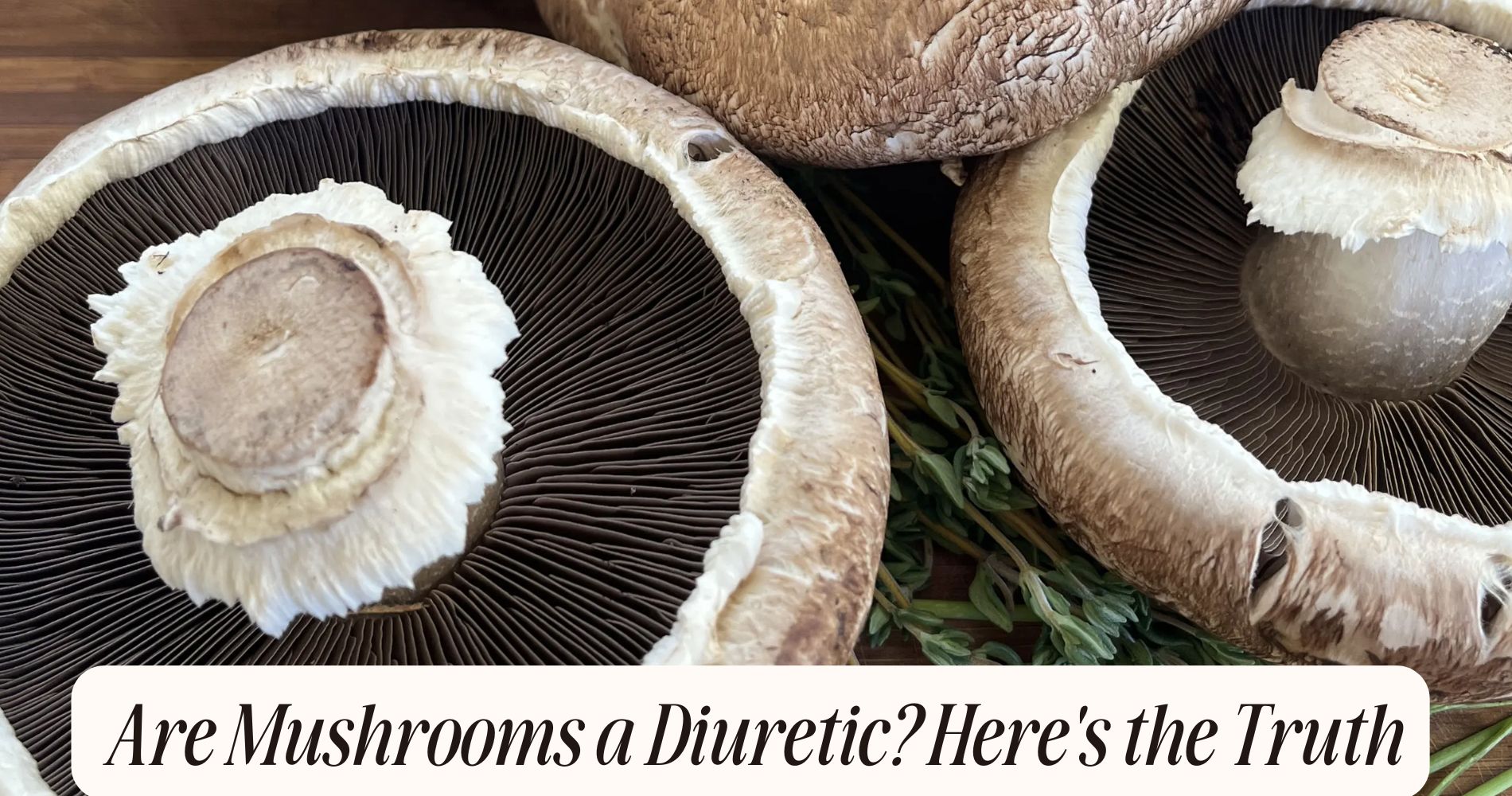
Calories in Portobello Mushroom – Quick Breakdown
If you're watching your intake, understanding the calories in portobello mushroom can help you make smarter food choices. A whole raw portobello contains just about 22 calories, making it a low-calorie, nutrient-dense option for any meal. Thanks to their high water content, portobellos are satisfying without adding bulk, while offering valuable nutrients like fiber, potassium, and B vitamins. Cooking methods matter—grilling keeps them lean, while sautéing adds extra calories. Let’s break down the nutritional value and discover delicious ways to include portobellos in your diet.
What Is a Portobello Mushroom?
A portobello mushroom is the mature form of the common white button mushroom (Agaricus bisporus), known for its large, flat cap and meaty texture. When you explore mushroom varieties, you'll notice that cremini mushrooms are actually the intermediate stage between white button and portobello.
This means all three types come from the same species, but differ in age and appearance. Portobellos are valued for their robust umami flavor and versatility in cooking.

Farming practices play a vital role in their quality. Growers often use controlled environments to maintain ideal humidity and temperature, which supports consistent growth and nutrient density.
Evidence shows that these practices help portobello mushrooms retain important nutrients like B vitamins, selenium, and potassium. You benefit from these nutrients when you include portobellos in your meals.
Calorie Content of a Raw Portobello Mushroom
When you eat a raw portobello mushroom, you're consuming a food that's naturally low in calories—scientific data from the USDA shows that one whole, raw portobello mushroom (about 121 grams) contains roughly 22 calories. This low calorie count makes portobellos a smart addition to your meals if you're focused on weight management or healthy eating.
As a product of mushroom cultivation, portobello mushrooms provide more than just minimal calories—they also offer valuable fungus nutrition. You’ll get dietary fiber, small amounts of protein, and essential micronutrients like potassium, phosphorus, and B vitamins.
Since portobellos are composed mostly of water, they fill you up without adding excess calories. Choosing portobello mushrooms gives you nutrient density and a satisfying, low-calorie ingredient for diverse dishes.
Comparing Portobello Mushroom Calories to Other Mushrooms
Curious how portobello mushrooms compare to other varieties in calorie content? You’ll find that portobellos are quite similar to their relatives. For example, a raw portobello contains about 22 calories per 100 grams. White button mushrooms are only slightly lower at 22 calories, while cremini mushrooms (essentially younger portobellos) match that number. Shiitake mushrooms, with a distinct flavor profile, are a bit higher at roughly 34 calories per 100 grams.

Despite these slight differences, all these mushrooms offer low-calorie options for your meals.
When considering portobello flavor comparison, portobellos stand out for their meaty texture and umami notes, making them popular as a meat substitute.
Regardless of which type you choose, mushroom nutrient diversity means you’ll get a healthy, low-calorie addition to your diet.
Nutritional Breakdown Beyond Calories
While calorie counts highlight portobellos as a low-energy option, their nutritional profile extends far beyond just energy content. You’ll find that portobello mushrooms offer a respectable fiber content, supporting digestive health and helping you feel satisfied after eating. Each cup provides about 1–2 grams of dietary fiber, which aids regularity and contributes to a balanced diet.
Portobellos also impress with their mineral profile. They’re a natural source of potassium, which is essential for heart and muscle function, and contain selenium, a trace mineral that acts as an antioxidant in your body. You’ll also get small but valuable amounts of copper and phosphorus, supporting your immune system and bone health.
How Cooking Methods Affect Calorie Count
Although portobello mushrooms start out low in calories, the way you cook them can substantially change their final calorie count. If you grill or roast portobellos without added fats, you’ll preserve their naturally low calorie content, since these cooking techniques don’t introduce extra energy sources.
However, sautéing mushrooms in oil or butter adds calories quickly, as these fats are calorie-dense. Even a tablespoon of olive oil can add around 120 calories to a serving. Similarly, breading and frying portobellos increases calorie variation, since coatings absorb oil during frying.

Steaming or microwaving, by contrast, keeps the calorie count closest to raw mushrooms. To keep your dish nutrient-rich and low-calorie, opt for dry-heat cooking methods and limit added fats during preparation.
Portobello Mushrooms in Popular Dishes
Whether you’re enjoying a vegetarian burger or a hearty stuffed entrée, portobello mushrooms frequently serve as the star ingredient in a variety of popular dishes due to their meaty texture and savory flavor.
You’ll find portobellos grilled as burger patties, baked and stuffed with vegetables or cheese, or sliced into stir-fries. Compared to other mushroom varieties, portobellos offer a larger cap, making them ideal for holding fillings or soaking up flavorful sauce pairings like balsamic reduction or garlic butter.
Their firm structure allows them to be roasted or sautéed without losing shape, so they're perfect as a meat substitute. Each preparation method can subtly alter the calorie count, but portobellos remain low-calorie while providing fiber and micronutrients, making them a versatile, nutrient-rich ingredient in diverse recipes.
Health Benefits of Eating Portobello Mushrooms
Because portobello mushrooms pack essential nutrients into a low-calorie package, adding them to your meals can support your overall health. You’ll benefit from their impressive dietary fiber content, which promotes digestive health and can help maintain stable blood sugar levels. Fiber also aids in keeping you fuller for longer, making portobellos a smart choice if you’re watching your calorie intake.

Portobello mushrooms are rich in antioxidant properties, particularly from compounds like selenium and ergothioneine. These antioxidants protect your cells from damage caused by free radicals, potentially lowering your risk of chronic diseases such as heart disease and certain cancers.
Additionally, portobellos provide B vitamins, potassium, and copper—nutrients essential for energy metabolism, nerve function, and immune support. By including portobellos, you’re nourishing your body efficiently.
Tips for Including Portobello Mushrooms in Your Diet
If you're looking for simple ways to boost your nutrient intake without adding many calories, try incorporating portobello mushrooms into a variety of meals. Thanks to advances in mushroom cultivation, you can find fresh, high-quality portobellos year-round, making them an accessible ingredient.
They're rich in vitamins B2, B3, and selenium, which support energy production and immune health. For flavor enhancement, slice and sauté portobellos to add depth to salads, sandwiches, or pasta dishes.
Their meaty texture also makes them a satisfying meat alternative in burgers or stir-fries. You can even dice them into omelets for extra nutrients without excess calories.
Low-Calorie Portobello Mushroom Recipe Ideas
Since portobello mushrooms are naturally low in calories and high in nutrients like fiber, B vitamins, and antioxidants, you can use them to create flavorful dishes that support a balanced diet.
Try grilling portobello caps and using them as a burger substitute; you’ll get a meaty texture with fewer calories than traditional buns. Slice and toss them into stir-fries or salads for extra volume and nutrients without adding much energy.
If you enjoy mushroom foraging or mushroom cultivation, freshly picked portobellos can be stuffed with spinach, tomatoes, and herbs, then baked for a nutrient-dense, low-calorie meal.
Sautéed with garlic and olive oil, portobellos provide savory flavor and essential micronutrients, making them a smart choice for anyone looking to eat healthier.
A Smarter Way to Enjoy Mushrooms
If you're intrigued by the low-calorie benefits of portobello mushrooms, you'll love the convenience of SUPER MUSHROOM GUMMIES by Well Gummies. Each chew packs the power of 10 functional mushrooms into a delicious wild berry treat—no chopping, cooking, or cleanup required. These vegan-friendly gummies help fuel your body and mind with natural energy, enhanced focus, and immune support—without the crash. It’s a simple, tasty way to elevate your health every day.
Frequently Asked Questions
Are Portobello Mushrooms Safe to Eat Raw?
You can safely eat portobello mushrooms raw, though some people find them tough and slightly bitter. You'll still gain nutritional benefits like fiber and B vitamins. They're versatile, so explore different culinary uses, both raw and cooked.
Can Portobello Mushrooms Cause Allergies?
You can develop a mushroom allergy, even with portobello mushrooms. Allergy symptoms may include itching, swelling, or digestive discomfort. While rare, evidence shows some people react to specific proteins in mushrooms, so monitor your body's response.
How Should Portobello Mushrooms Be Stored for Freshness?
To maximize mushroom storage and freshness preservation, you should keep portobello mushrooms in a paper bag in the fridge. This method allows excess moisture to escape, preventing spoilage and helping retain their nutrients and texture longer.
Are Portobello Mushrooms Suitable for a Vegan Diet?
You can absolutely include portobello mushrooms in a vegan diet. They offer nutritional benefits like fiber, B vitamins, and minerals. Their hearty texture and umami flavor make them versatile for many culinary uses, from grilling to stuffing.
Can You Freeze Portobello Mushrooms for Later Use?
You can freeze portobello mushrooms for later use by using proper freezing techniques. Blanch them first to preserve nutrients and texture. This mushroom preservation method helps retain flavor and prevents nutrient loss, ensuring they're ready for future recipes.
Conclusion
Portobello mushrooms are a nutrient-dense, low-calorie choice you can easily add to your meals. With only about 20–30 calories per large raw cap, they’re a smart option if you’re watching your intake. Packed with fiber, protein, and vitamins, portobellos support overall health. Whether you grill, roast, or stuff them, you’ll enjoy both flavor and nutrition. Add them to your diet and you’ll boost your meals without piling on extra calories.




